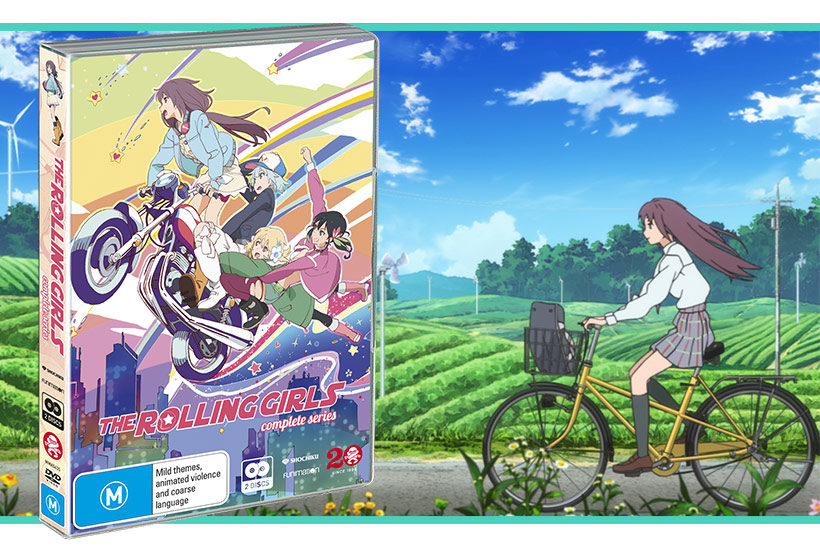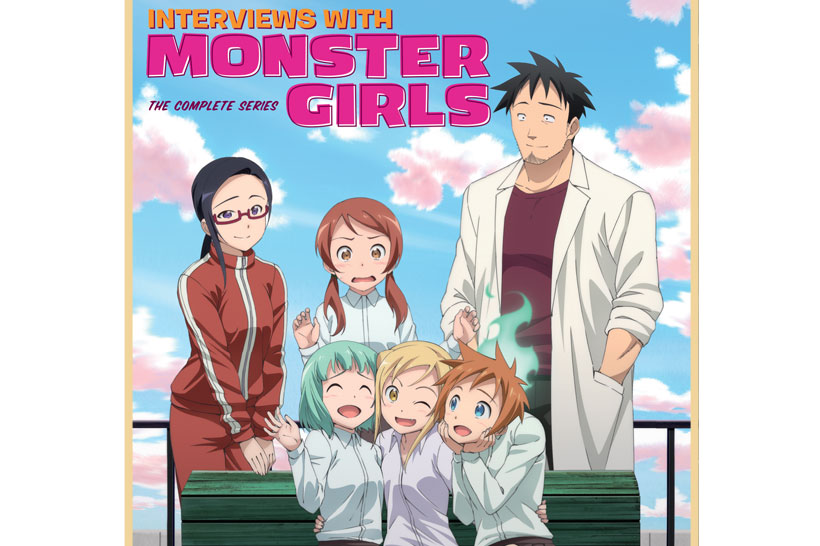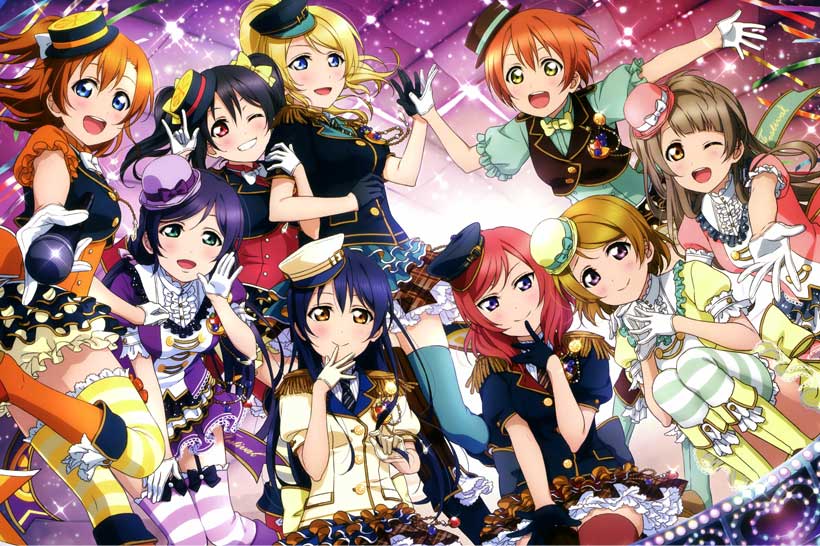The Rolling Girls is fascinating – it presents a hyperactive, technicolour dreamscape peppered with a high-energy soundtrack and delivered in a fascinating post-apocalytpic setting that in many ways is the opposite of what we’d normally expect from such a scenario, anime or non. The question is on how it uses these different elements and if it can effectively deliver on the ambitious premise.
The basic premise of The Rolling Girls is that Japan imploded 10 years ago, with the intelligencia and money-makers abandoning their homeland after the Great Tokyo Wars. Harking back to pre-Tokugawa unity, the disparate prefectures have now morphed into individual (and often eccentric) city states. To keep the peace each state relies upon a Best who draw their powers from a magical stone to keep warring factions at bay, often through combat, with their immediate supporters, Rests, helping with everything else.
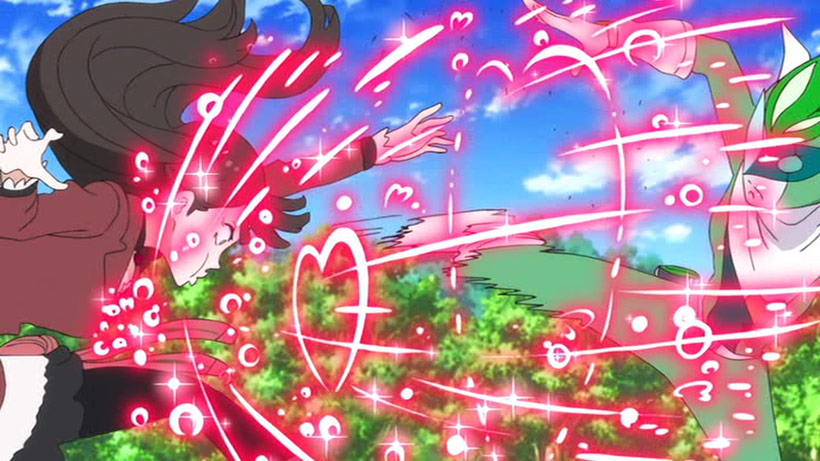
Within this context is Nozomi, whose local Best, Maccha Green, is caught in a battle for control with a competing Best. When combat between the competitors for control sees both of them hospitalised Nozomi decides to travel to other city states on behalf of her idol (and effectively proto-sister) to act as her representative and help other Bests keep their respective peace, powerless as she is without a sparkly stone thingo. She gathers a motely crew of similarly minded friends along the way as she travels through each area with all the elements of a classic road trip/coming of age tale, eventually falling into a conspiracy and dramatic series of final battles.
On the surface the premise of the show is very rich – coming of age/road trip stories have a habit of being engaging (as we saw with Final Fantasy XV), the city state context is interesting for those familiar with Japan’s history and an overlying conspiracy can often be great fun. In many respects, The Rolling Girls does have a good time exploring its story, but it’s hampered by pacing issues and the short length of the series. The world is incredibly rich and the director’s made the right call to allow the viewer to organically build their world-awareness through Nozomi and her group of friends, but things move along so swiftly that context and major players become muddied. The overarching conspiracy and inter-family feuds have some great elements, but are prone to suffering from expediency and lack the depth that would benefit them. There’s also a great big hole left in explaining the back story of the war that triggered Japan’s return to factionism.
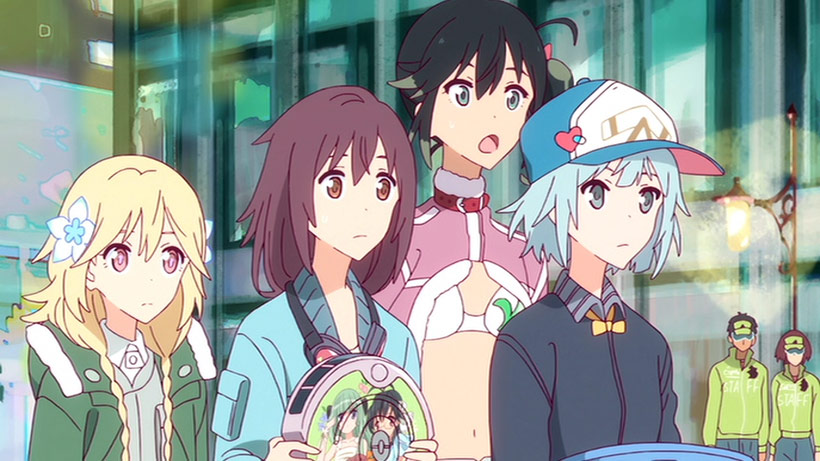
Focusing on the micro, there’s still plenty to enjoy. The main ensemble are generally interesting and likeable, and the creative staff clearly had some fun with the world building – the doujin/cosplay town of Always Comima warranted a few chuckles, the food obsessions in the east made me smile and the dichotomy in Kyoto was fantastic, leading to an amazing concert sequence that married some spectacular action sequences with amazing music.
This logically leads to pointing out The Rolling Girls’ most obvious strengths – its production values. The animation is nothing short of a kinetic obsession, with character battles exploding in arrays of light, colour and amazing effects design. Nothing is done on the sly, resulting absolutely crazy, outlandish action that would make fans of Gainax’s work smile. Colour pallets eschew muted colours for bright primaries alongside contrasting pastels. The art direction and design really, truly, is inspired.
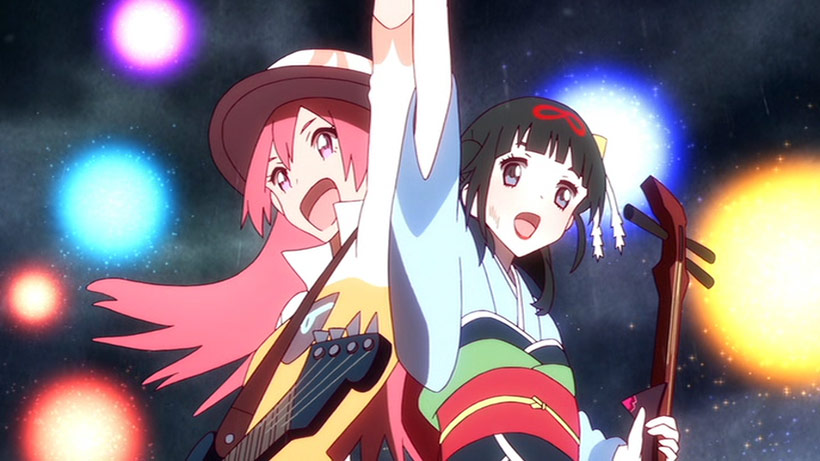
The audio also deserves special mention – ops and eds are catchy in themselves and there’s an impressive array of other vocal tracks throughout the series. My personal favourite was from the Kyoto concert where pop rock lead guitar fuses itself with koto – absolutely stellar direction. The interwebs confirms pop covers of tracks originally by Blue Hearts feature in The Rolling Girls, which in itself is a sly connection to the main cast’s common interest in legendary (ficticious) band Momiage Ham and the occasional covers thereof in the Kyoto scenes.
The DVD package itself does the job – mastering looks solid, impressive given the kinetic visuals would put considerable strain on your average MPEG2 encode. Extras are minimal – commentary for a few key episodes with the English dubbing team, clean ops/eds and a collection of all the episode previews. Lean, but functional.
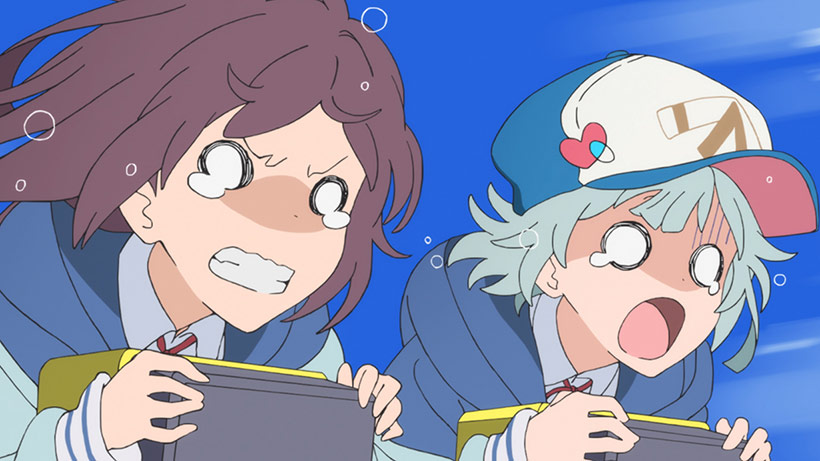
Despite its shortcomings, there’s a lot to like with The Rolling Girls. As an aural/visual experience it’s great fun, and the characters are endearing if a little under-developed as far as the storytelling goes. With a combination of more time and focus we’d have a series that hits its highs consistently rather than sporadically, though when the series hits its mark, it does so spectacularly.
A review copy was provided by Madman Entertainment to the author for the purpose of this review.

